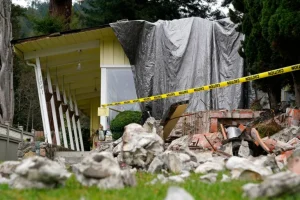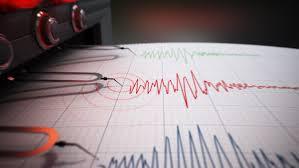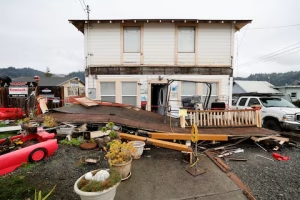California – A California Earthquake measuring 3.4 on the Richter scale struck near Big Bear City early Sunday morning, briefly shaking the surrounding region and prompting residents to share their experiences online. The tremor, though minor, reminded Californians of the state’s continued seismic vulnerability.
Tremor Recorded Near Big Bear City

According to the United States Geological Survey (USGS), the California Earthquake occurred at 2:51 AM local time. The epicentre was located approximately four miles north of Big Bear City and three miles deep underground. Though the quake was relatively small, its shallow depth allowed vibrations to be felt across nearby areas such as Lucerne Valley and Big Bear Lake.
Residents described a light shaking sensation that lasted only a few seconds. While no damage or injuries were reported, the California Earthquake served as a reminder of the frequent low-intensity tremors that affect the region.
USGS Invites Residents to Report Tremor Experience


The US Geological Survey has urged those who felt the California Earthquake to submit their experiences via the agency’s “Felt Report” form. These community reports play a key role in improving earthquake impact assessments and mapping real-time shaking intensity.
According to early data, at least 16 individuals from Lucerne Valley, Big Bear City, and Big Bear Lake reported mild to light shaking. The California Earthquake received preliminary confirmation through these public submissions, helping authorities understand the tremor’s local impact.
Series of Quakes Recorded in the Region
The recent California Earthquake is one of several small quakes that have occurred in the region over the past week. Seismologists noted three earthquakes of magnitude 2.5 or higher within this short period.
A 3.4 magnitude quake was recorded north of Big Bear City on October 4, while another tremor of magnitude 2.6 struck north-northeast of Cabazon on October 5. Experts say these recurring minor quakes are common in seismically active areas like southern California, but they still warrant close monitoring.
Understanding the 3.4 Magnitude Tremor
Although the California Earthquake measured only 3.4, it was felt across multiple nearby towns due to its shallow depth. Earthquakes of this magnitude are typically classified as minor and rarely cause structural damage. However, their occurrence highlights the state’s constant geological movement along fault lines.
Seismologists emphasize that even small tremors like the California Earthquake are significant for research. Each recorded quake adds valuable information about fault behavior, helping scientists predict and prepare for potentially larger seismic events.
How Residents Reacted to the Tremor

Many residents took to social media shortly after the California Earthquake to share their experiences. Some reported being woken up by the sudden shaking, while others described hearing light rattling of windows and objects.
Also Read: Latest Update: India Russia Negotiate 5 More S-400 Systems to Strengthen Air Defence
Despite the brief alarm, most people resumed normal routines within minutes. Local authorities confirmed there were no reports of property damage, power outages, or injuries linked to the California Earthquake.
Authorities Emphasize Preparedness
Officials have used the California Earthquake as an opportunity to remind citizens about safety measures during seismic activity. Given the unpredictability of quakes, preparedness remains the best line of defense.
Residents are advised to secure heavy furniture, keep emergency kits accessible, and practice the “Drop, Cover, and Hold On” protocol. The California Earthquake reinforces the importance of routine drills, especially in areas near active fault lines.
Safety Tips During an Earthquake
Authorities have reiterated basic safety steps that could save lives during events like the California Earthquake:
-
If driving: Pull over and stop away from bridges, trees, or buildings.
-
If in bed: Turn face down and cover your head with a pillow until the shaking stops.
-
If indoors: Stay inside, move away from windows, and take shelter under sturdy furniture.
-
If using a wheelchair: Lock the wheels and protect your head and neck until the tremor subsides.
The California Earthquake once again underlined the value of staying alert and informed during such incidents.
Understanding California’s Seismic Landscape
California lies on multiple fault systems, including the well-known San Andreas Fault, making it one of the most earthquake-prone regions in the United States. The California Earthquake near Big Bear City fits into a long pattern of low to moderate seismic activity in southern California.
Experts state that while most quakes remain minor, they serve as reminders of the constant energy shifts beneath the Earth’s crust. The California Earthquake also emphasizes the role of updated infrastructure and strict building codes designed to withstand tremors.
No Major Damage Reported, But Vigilance Urged
Emergency services confirmed that no major incidents or injuries resulted from the California Earthquake. However, the tremor highlights the ongoing need for readiness among residents and local authorities alike.
Monitoring stations continue to observe aftershocks, though none significant have been recorded so far. The California Earthquake serves as a cautionary event, urging citizens not to ignore small tremors that could signal deeper geological activity.
Conclusion: A Reminder of Nature’s Unpredictability
The California Earthquake near Big Bear City may have been minor, but it underscores the ever-present seismic risks in the state. Each quake, no matter how small, is a reminder of nature’s unpredictability and the importance of preparation.
Residents are encouraged to stay vigilant, update their safety plans, and report any future tremors promptly. The California Earthquake stands as another chapter in the ongoing story of seismic resilience across the Golden State.

